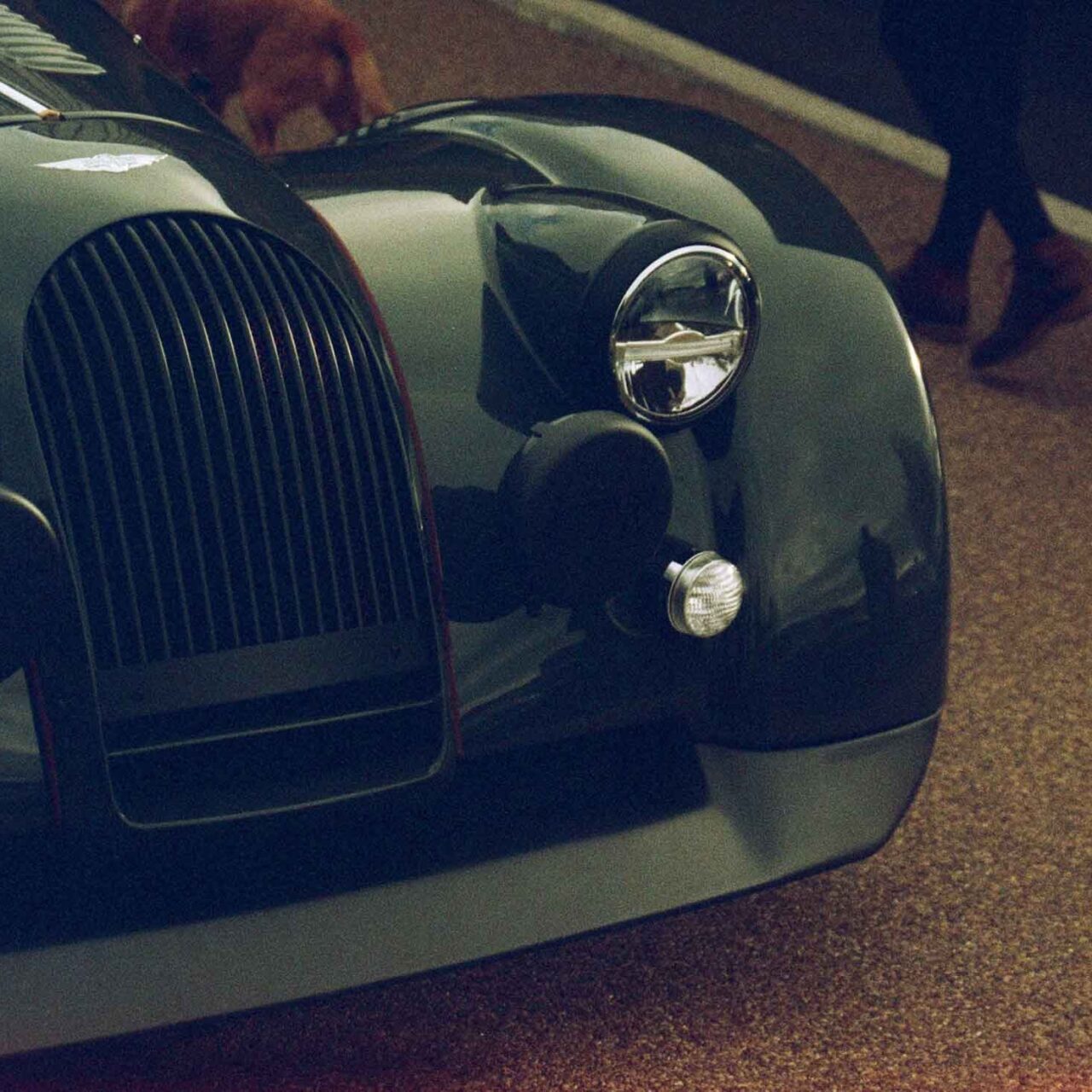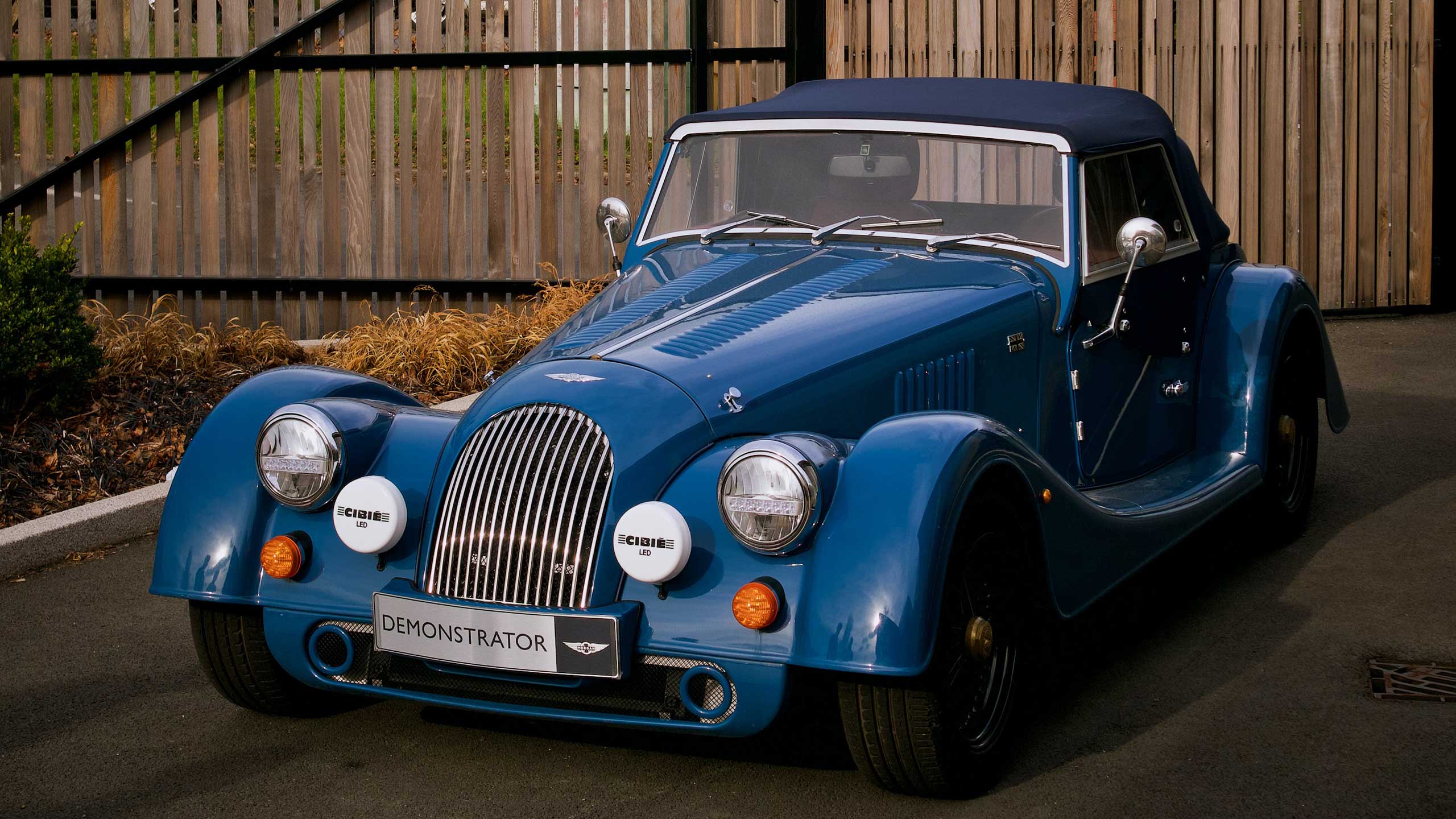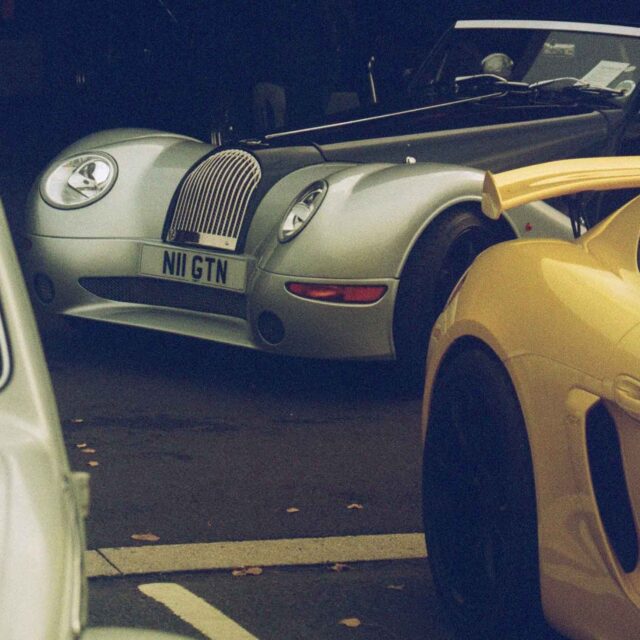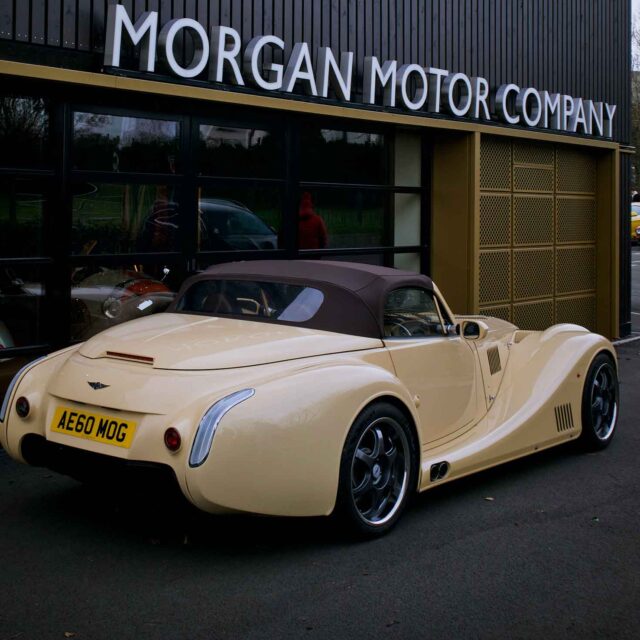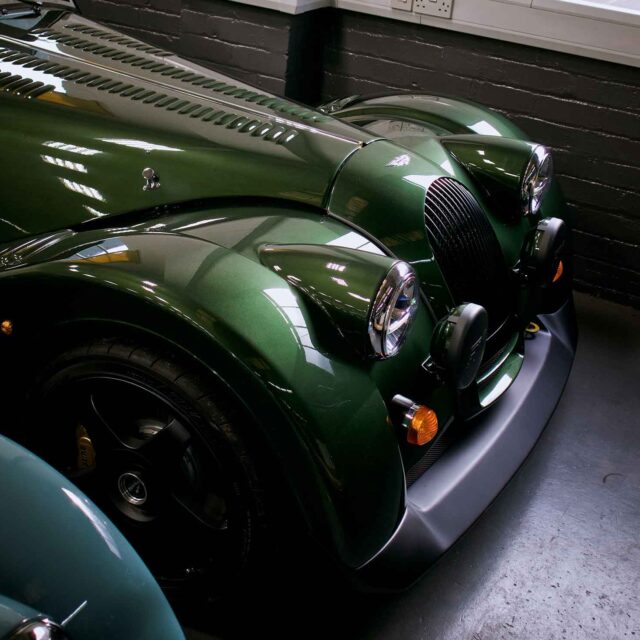Henry Fredrick Stanley Morgan, the Morgan car’s creator, was born in Moreton Jeffries, Herefordshire, in 1881. He was educated at Stone House, a school in Broadstairs, Kent, Marlborough College, Wiltshire, and the School of Practical Engineering at the Crystal Palace in Sydenham, south London. At Crystal Palace, he became a cyclist and afterwards a car enthusiast. After a hair-raising first drive in a 3-hp Benz that raced away down a 1-in-6 slope between Bromyard and Hereford, he emerged intact but impoverished. Repairs cost £28 and delayed his goal of getting a car.
H.F.S. was apprenticed to William Dean and George Jackson Churchward, Chief Engineers of the G.W.R. Railway Works at Swindon, in 1901. After completing his apprenticeship, he worked briefly in the G.W.R Swindon drawing office before leaving in December 1904. During his tenure at Swindon, Henry acquired a 1902 Eagle tandem, which he replaced in June 1904 with a Wolverhampton-built Little Star. His sympathies were split between the locomotive and the vehicle. The car won!
On May 1905, with encouragement and financial backing from his father, H.F.S. acquired Chestnut Villa in Worcester Road, Malvern Link, and erected a modest garage. Here, he became a dealer for Darracq, Wolseley, Siddeley, and Rover automobiles.
Leslie Bacon, another automobile lover, and railway apprentice became Harry’s business partner and moved into Chestnut Villa. Birmingham motor engineer Alfie Hales was named workshop foreman.
H.F.S. offered Malvern’s first omnibus service between Malvern Hills areas. In 1906, a second garage opened in Worcester (near Foregate Street station for easy rail access), but it closed a year later. Morgan’s love for engineering led him to experiment with an automobile of his own design despite the success of the Malvern Link garage.
The Morgan Three-Wheeler was the company’s icon. H.F.S. Morgan’s basic design was one of the first successful lightweight vehicles. Fitting a strong motorcycle engine and simple gearbox into a light frame and body inspired the ‘Cyclecar’. Thus, ‘new motoring’ brought open-road freedom to individuals with less money. Henry Morgan introduced motoring to the public with the Morgan Runabout.
The 1909 prototype was a steel three-wheeler with a 7 hp Peugeot V-twin engine. Its 90-brake horsepower per tonne power-to-weight ratio allowed it to accelerate as quickly as any car at the time. Mr Stephenson-Peach, engineering master at Malvern College and Repton School in Derbyshire, helped H.F.S. The positive response to Morgan’s automobile prompted him to investigate mass-producing it. Leslie bacon thought this was too hazardous and quit the relationship, but they remained close friends.
The original manufacturing Morgans were single-seat motorcycles handled with a tiller and powered by a 4hp or 8hp J.A. Prestwich engine. Sir John Black of the Standard Motor Company drew the patent drawings. The Runabouts were presented at the 1910 Olympia motorcycle show in London.
Due to the unavailability of a two-seat variant and the old-fashioned tiller steering, only a handful were constructed and sold. One month later, H.F.S. Morgan entered the Runabout in the MCC London to Exeter Trial and earned a Gold Medal. This was the first of many successes in reliability trials, racing, and record-breaking at Brooklands.
A two-seat ‘Runabout’ with wheel steering and a hood was introduced the following year. Olympia 1911 was a commercial triumph. This unique machine caught the attention of Harrods’ managing director, Mr. Burbridge, who put it in the store’s window, the only automobile to do so. Harrods was the first dealer to sell all Morgan runabouts exclusively. To meet demand, Malvern initially only manufactured running chassis, with Harrods own body. The heavier Harrods body hurt the car’s performance, thus H.F.S. ended the deal. A nationwide network of dealers soon followed.
The firm experimented with different designs, including a four-seater for Mr. Morgan and his family. Worcester Road, Malvern Link, produced more cars. The Morgan was one of the original Cyclecars and was the best-engineered, most dependable, and most successful in its class, setting the bar for later manufacturers. It has two speeds (rapid and very fast), but no reverse (to go backwards required gravity, or the driver had to get out and push). The simplicity of the chassis design allows for several different engine types.
The Morgan Motor Company was founded in 1912 by Reverend H.G. Morgan and his son Henry. H.F.S. bought a tract of property from Earl Beauchamp in December 1913. In 1914, two enormous workshops were erected on farmland a quarter mile from the Worcester Road facility. This is currently the location of the “Works” factory. The First World War halted development of the Pickersleigh Road facility, and while automobile manufacture continued at Worcester Road, output dropped as men were called up to fight and resources were dedicated to munitions production. Capt. Albert Ball of the Royal Flying Corps requested a special-bodied Grand Prix, calling it “the closest thing to flying without leaving the ground.” Captain Ball was slain shortly after receiving his automobile.
Due to its simple design, Morgan was one of the first manufacturers to begin full production in 1918. Most production shifted from Worcester Road to Pickersleigh Road. Almost immediately, the new works were expanded by extending the two existing workshops and building two further workshops to the east. Sylvia Morgan, Harry Morgan’s eldest daughter, lay the foundation stone for the expansions on 16 October 1919. To commemorate, a supper dance was organised in the new paint shop for employees, their families, and friends, many of whom had returned from military duty.
Morgan introduced a four-seater “Family” Runabout. This was introduced in London in 1911.
The 1920 Morgan was inspired by Capt. Albert Ball’s Grand Prix automobile. The Aero was named after the great aviator.
H.F.S. Morgan’s early ideas were so sophisticated that few changes were needed for years. The two-speed gearbox continued in manufacture until the early 1930s. Starters and electric lighting replaced acetylene lamps. As a consequence of dependability tests, Morgan cars were among the first to use front wheel brakes. More powerful overhead valve V-twin engines improved the Morgan’s performance.
The Morgan was so quick in the 1920s that it had to start a lap behind four-wheeled vehicles in the same class at Brooklands. Morgans earned more medals and awards in trials than any other machine. Foreigners liked Morgan three-wheelers. In France, Monsieur Darmont licenced the Darmont Morgan from H.F.S. Morgan.
Racing results led to the 1927 debut of the streamlined Super Aero. Following the success of earlier vehicles, the Super Aero hit the trials hills and racetrack. The automobiles were not only dominant in motorsport, but also stylish on the road.
Mrs. Gwenda Stewart broke the One Hour World Record at Monthléry, south of Paris, in 1930. She subsequently hit 117 mph in a Morgan on Arpajon’s long straight. 1931 introduced a three-speed and reverse gearbox, single chain, and removable wheels. This configuration was subsequently adopted on all models, with Matchless engines powering the high-performance Super Sports.
Robust and dependable, Morgans were sold globally, as demonstrated with the Egyptian pyramids. The firm also built more modest cars, such the Standard Runabout, the DeLuxe, and the four-seater ‘Family’ Morgan even made a three-wheeled delivery van.
Morgan set many World Records in 1933. 1933 saw the debut of the Ford-powered F-type. In the factory’s rear was the prototype. The F4 was the first manufacturing F-type, followed by the F2. F-types have Z-section steel ladder-frame chassis instead of tubular steel. This successful three-wheeler with a traditional bonnet and radiator inspired other companies to emulate it.
After trials and track testing, a four-wheeler was shown at the London and Paris Exhibitions in 1936. The new Morgan 4-4 model has four cylinders and four wheels to distinguish it from the three-wheeler. The automobile had a Z-section steel chassis with boxed cross members and a steel-panelled ash body. Combining coach-built robustness and sports car lightweight. The automobile sold quickly. After the Morgan 4-4 Roadster, a four-seater and Drophead Coupe followed. The three-wheeler stayed in production despite declining V-twin sales. The F-type remained popular, and in 1938 a high-performance two-seater variant was added.
The 4-4 kept Morgan’s reputation for performance. 1937 saw the production of a few 1098cc sporting 4-4 versions. Balanced Coventry Climax engines produced forty-two bhp. In 1938, Prudence Fawcett, a 25-year-old novice driver, joined the Le Mans 24-hour race in a works-prepared Morgan 4-4. Prudence finished 13th overall and qualified for the Biennial Cup with co-driver Geoff White. Geoff White and ‘Dick’ Anthony finished 15th overall and second in class in 1939.
1938 saw the Climax engine replaced with a Standard Motor Company overhead valve power unit. Sir John Black of Standard, a long-time friend of H.F.S. Morgan who drew the original Runabout patent drawings in 1910, commissioned this boat for Morgan. The new engine was coupled to a Moss gearbox installed in the chassis via a short propeller shaft. The chassis used 8″ Girling brakes.
During WWII, just two repair departments were kept by the company. Service and Spares. Standard Motor Company Aero Engines made carburettors, aircraft undercarriages, and other precise technical work.
In 1945, competent soldiers returned to the facility, and automobile manufacture began a year later. Peter Morgan, H.F.S.’ son, joined the business in 1947 after being demobilised. The final twelve twin-cylinder three-wheelers were delivered to Australia in 1946 using pre-war parts. Due to post-war steel shortages, export orders were prioritised above domestic orders. Three-wheelers were not popular overseas, therefore manufacture ended in 1950. In 1953, Morgan produced its final three-wheeler.
The Morgan Three-Wheeler Club was founded in 1945 by a small group of enthusiasts. Shortly after its founding, the Club visited the facility, and photos show a line of automobiles in Pickersleigh Road in front of the still-camouflaged building. Morgan Sports Car Club established with thirty members in July 1951. The first gathering was in Kegworth, Leicestershire. These two clubs help Morgan automobile enthusiasts today.
H.F.S. Morgan, the company’s founder, died in 1959. Henry Morgan was a famous motoring pioneer. He missed the company’s 50th anniversary in April 1960.
